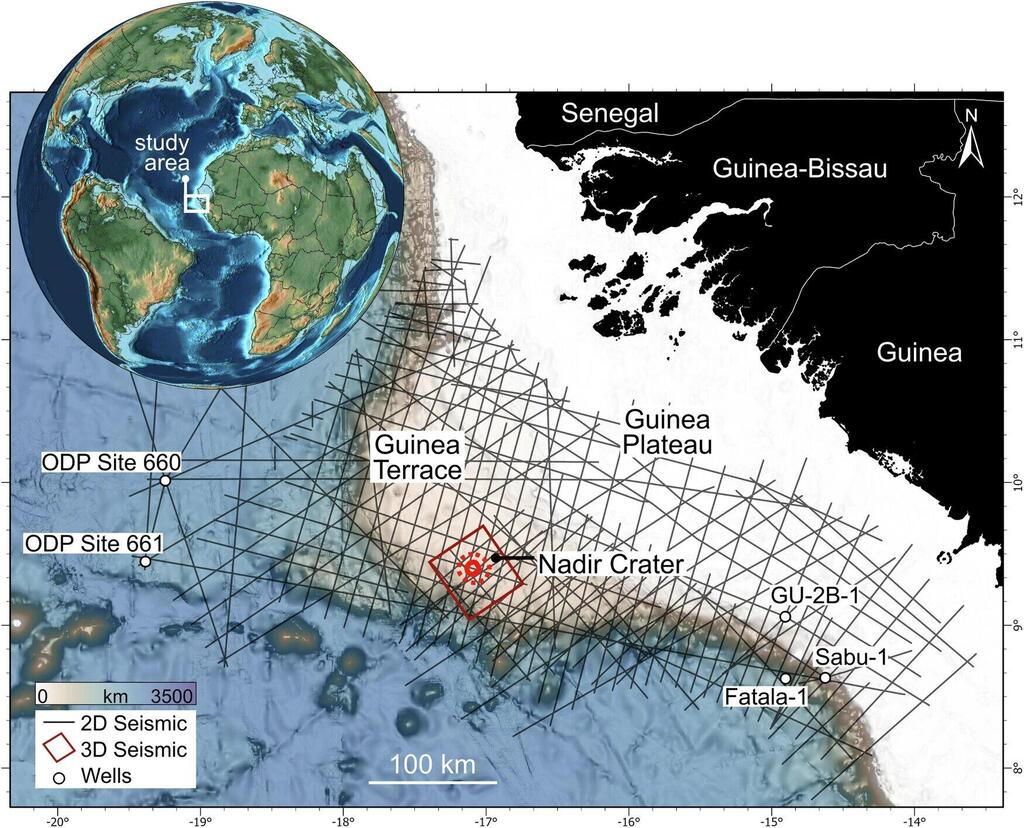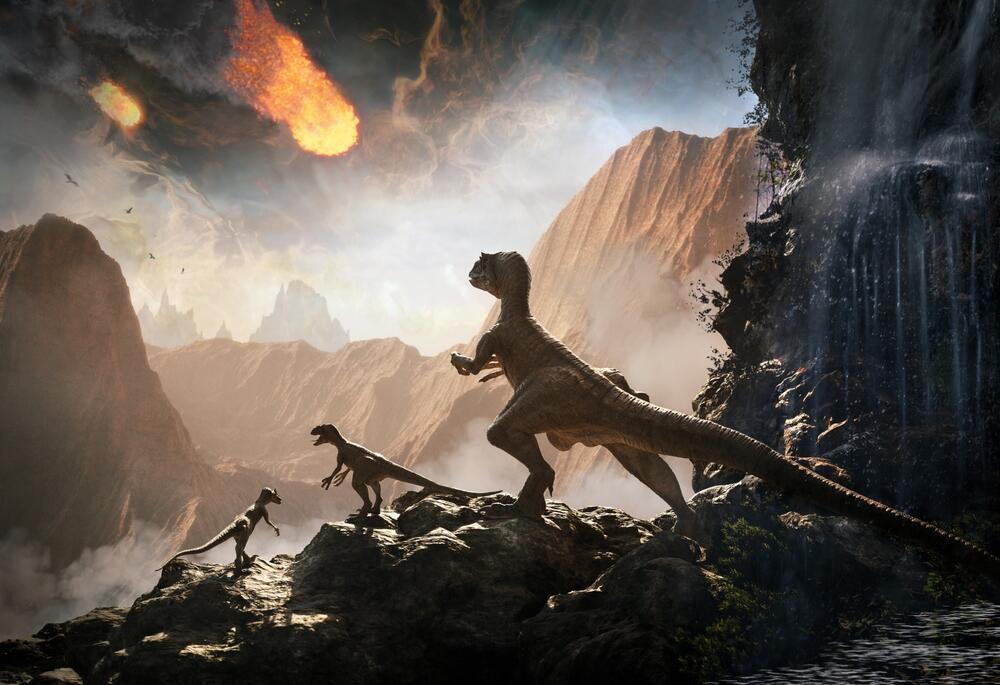Getting your Trinity Audio player ready...
Imagine the thrill of unearthing secrets from the Cretaceous period, about 66 million years ago, when a colossal event shaped our planet's history. Deep beneath the Atlantic Ocean, at approximately 984 feet, lies the "Nadir" crater, a testament to an asteroid impact that occurred contemporaneously with the Chicxulub event near the Yucatán Peninsula in Mexico, which left a massive 124-mile-wide scar on the Earth.
Recent revelations about the Nadir crater, spanning about 5.6 miles, not only reaffirm the asteroid impacts that played a pivotal role in the extinction of the dinosaurs but also provide vivid insights into the immediate aftermath: the creation of a concave crater, liquefied rocks, widespread devastation in surrounding areas, and a towering tsunami at least 2,625 feet high in the Atlantic Ocean.
Dr. Uisdean Nicholson, an Associate Professor of Geoscience at Heriot-Watt University, unearthed the Nadir crater in 2022, nestled on the ocean floor off the coast of Guinea in West Africa. His findings revealed a 5.6-mile-wide depression, which he identified as a crater formed by an asteroid impact. After a meticulous analysis, Dr. Nicholson and his colleagues estimated the asteroid's width at several hundred meters, with its impact aligning with the Chicxulub asteroid, famously linked to the dinosaur extinction.
In a groundbreaking study published in Communications Earth & Environment, high-resolution 3D seismic data has irrefutably confirmed that a giant asteroid forged the Nadir crater. "While about 20 marine craters have been confirmed worldwide, none have been documented to this level of precision," Dr. Nicholson marvels, comparing this achievement to the evolution of ultrasound imaging, where once grainy blobs now reveal intricate 3D details.
Transitioning from blurry 2D to crystal-clear high-resolution 3D images of the Nadir crater enriches our understanding of this catastrophic event. Initially thought to be about 1,312 feet wide, the asteroid's estimated width is now between 1,476 to 1,640 feet, based on the crater's size in the 3D images. It likely struck at a low angle, traveling at a staggering speed of approximately 45,000 miles per hour.
The research team has crafted a timeline detailing the seconds and minutes following the asteroid impact, including earthquakes that fractured the ocean floor and massive tsunami waves that left indelible marks of the catastrophic event.
Dr. Nicholson points out that humanity has never witnessed an asteroid of such magnitude striking Earth. The closest event was the Tunguska incident in 1908, when a 164-foot-wide asteroid exploded over Siberia. The new 3D seismic data offers a unique opportunity to test hypotheses about the Nadir crater, develop new models of crater formation in marine environments, and understand the repercussions of such an event. Dr. Nicholson is eager to drill into the ocean floor to sample cores from the crater, which could illuminate the environmental pressures during the impact and the subsequent events.
"There are pristine impact craters on airless bodies like the Moon, but no subsurface structural information is available for them. On Earth, it's the opposite, with craters eroding quickly. Thus, the new 3D seismic imaging of the Nadir crater represents a breakthrough, offering an unprecedented deep view into this impact crater, compensating for the erosion challenges of terrestrial craters," says Dr. Veronica Bray from the University of Arizona, an expert on impact craters across the solar system and part of the research team.
Get the Ynetnews app on your smartphone:
Google Play: https://bit.ly/4eJ37pE
Apple App Store: https://bit.ly/3ZL7iNv



